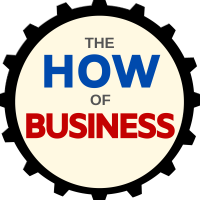Profit & Loss Statement for Small Business.
How to use your Profit & Loss Statement (P&L) to help you measure and manage a profitable small business, with serial entrepreneur Henry Lopez.

Are you making or losing money in your small business? This episode is about helping you answer that critical questions by understanding and using your Profit & Loss Statement, which is one of the important financials statements you should use to help manage your business.
Henry covers this topic from a small business owner’s perspective. He is not a CPA or Accountant, so his tips and suggestions are based on his experiences as an owner of multiple small businesses over the years and his experience as a coach and consultant for many other small businesses.
Henry focusses on high-level tips and suggestions for how to use your P&L to help you run and grow your small business. It’s important that you consult with your accountant or CPA about your financials, and continue learning, incrementally, how to interpret your financials statements.
Lots of business owners are uncomfortable with this part of their business, so it gets ignored and can also get out control. You may have never learned how to use and interpret financial statements. You are not alone, and you can change this! And you don’t have to be a financial or math expert!
In this episode Henry Lopez walks you step-by-step through a Profit & Loss statement. Profit & Loss Statement for Small Business:
Free Download: Sample Profit & Loss Statement
- Financial statements help us keep financial score of the health of our business. The P&L Statement in particular, should provide you with an accurate snapshot of your financial performance for a prior period of time – in the previous month, quarter, or year for example.
- How do I read my business financial statements? What are the financial statements I need for my business. How often do I need to review my Profit and Loss or Income statement.
- What is a P&L?
- A Profit and Loss statement details your businesses’ income and expenses over a defined period. The Profit & Loss statement is also referred to as a P&L, income statement, statement of profit, statement of operations, and a profit and loss report.
- Ideally, you produce a P&L every month or quarter at the latest.
- Your P&L summarizes the revenues, expenses and profit for a period of time.
- It’s NOT the same thing as a Cash Flow Statement! Since it does not necessarily show all of the cash flowing in and out of the business. For example, it should not show money you spend on a new vehicle or piece of equipment – that’s an asset and it shows up on your Balance Sheet. It also does not reflect your cash-on-hand (working capital, savings, etc.). This means that it’s NOT that same as your Bank Statement.
- It’s a lagging indicator, but it helps us measure our performance, growth and to identify financial trends – both good and bad.
- It’s not the only important financial statement, but it’s often the most important. If you have receivables, then your Cash Flow Statement and you’re A/R Aging Report are also critical.
- To keep it simple, I am going to assume cash accounting method, and not get into the additional complications of accrual accounting.
- Why do many businesses owners fail to review their P&L or perhaps don’t understand how to use it? (It’s ok if this is you! You are not alone!)
- You have never been taught.
- It’s not what you are good at or want to do.
- You believe its not what you should focus on and it can wait. The business needs you elsewhere! You are too busy!
- You are uncomfortable with money.
- These are all excuses. As the owner, we must embrace this aspect of running a business and at least get to the point where you can effectively use your financial statements, particularly your P&L, to help you measure the health of your business and plan for growth.
- You or your spouse/significant other/partner are responsible for all financial functions, and you simply can’t get to it soon enough (perhaps it’s time to delegate and get help!).
- The high-level questions a Profit & Loss statement helps us answer include:
- Are you making or losing money?
- The only way to accurately know how your business is doing – how your business model is performing – is to track your financial progress by reviewing a profit and loss statement every month. The P&L lets you see whether your business is profitable and growing, or if it’s losing money and you need to make adjustments or radical changes.
- Did we make a profit over a specific period of time? How are we performing compared to plan? What was my profit margin last year? If you can’t answer these questions easily, then you probably don’t have a handle on your financials and you are navigating your business blindly.
- How did the business perform financially compared to a previous period?
- How is the quarter or year progressing? (So that you can compare that to plan.)
- What are your expenses and are there any concerning trends or expense categories to investigate?
- Any irregularities that you need to investigate? (This helps avoid fraud and other losses due to errors.)
- Are you making or losing money?
- How to read and interpret your P&L:
- Chart of Accounts (your list of business income and expense accounts) – customize it to fit your needs over time.
- Revenues:
- Revenues, sales, gross receipts, fees, or any other term to describe the company’s operating revenue. Operating revenue is typically shown on a separate row from non-operating sources of income, like bank interest.
- By Category or Segment? Get as granular as you need to so that you can accurately measure performance.
- Costs of Goods Sold:
- If you make or assemble a product, then you have COGS. This includes all of your raw materials (the cost of inventory or materials used to create your products) and the labor that goes in to making and/or installing that product.
- Gross Profit Margin:
- Calculating Gross Profit Margin allows you to compare to others.
- Helps you determine or adjust pricing.
- Helps identify your high and low performing product lines or service offerings.
- Expenses:
- Fixed – Opportunity to manage these longer-term. Examples: rent, equipment lease payments
- Variable – You can impact these in the short-term. Examples: Advertising costs, Employee salaries, benefits, and payroll taxes, office supplies, professional fees.
- Non-Operating Expenses: Non-operating expenses, such as interest and taxes, are often broken out separately from operating expenses for illustrative purposes.
- Depreciation: funny money! A tax benefit, but not a “real” expense.
- Net Profit or Loss:
- The net amount of the company’s profit or loss for the period. When trying to compare companies in different industries and tax situations, net profit or loss is often equated to the earnings before interest, taxes, depreciation, and amortization (EBITDA).
- Profit Margin or Margin: Your Net Profit expressed as a percentage of Revenues.
- What a good profit margin? It depends and varies by business and industry. You should research what’s typical and realistic for your type of business, market and situation.
- Comparative Analysis & Periods:
- Periods for comparison may include:
- Month
- Year to Date (YTD)
- Quarter to Date
- Month compared to same month last year.
- YTD compared to same period last year.
- Horizontal analysis:
- Focuses on changes over time within a particular line item. For example, the percentage that revenue increases year over year for a five-year period. It helps you see patterns. It helps you detect red flags (e.g., that COGS is too high, or Office Expense has increased significantly over last year).
- Vertical analysis:
- Focuses on the relative size of expense items to the company’s revenue. For example, how much is your company spending on marketing relative to its revenue, and how is this trending over time? This also supports planning and budgeting, and comparisons to others in the same industry.
- Periods for comparison may include:
- Other Tips:
- Scan for irregularities. For example, your labor is significantly higher than last month, why?
- Use a tool like QuickBooks to drill into line items on your P&L that you have questions about.
- Add accounts to your Chart of Account to serve your needs.
- Develop budgets for major variable expense categories.
- Typical time investment to review your P&L each monthly: 15-30 minutes.
- The real investment is in maintaining accurate and timely financials!
- Why are accurate financials and financial statements important?
- Critical to help you manage your business for profitability and growth.
- Critical to being able to measure performance. For you and your team.
- Critical to selling your business if you decide to do so.
- Where to start?
- Up-to-date and accurate financials.
- Implement a financial management tool like QuickBooks.
- Our trusted partners at CapForge Bookkeeping & Tax are offering a special for our listeners: 3 FREE Months of QuickBooks Online for new Bookkeeping Service Clients: Learn More
- Get help from a bookkeeper, accountant or CPA to validate the accuracy of your financials and to help you learn more about how to use your financials to manage your profitable small business.
- Delegate bookkeeping – but don’t abdicate the ultimate responsibility for your financials!
- Start reviewing your P&L monthly.
- Scan for irregularities. For example, your labor is significantly higher than last month, why?
Resources:
Free Download: Sample Profit & Loss Statement
Books mentioned in this episode:
[We receive commissions for purchases made through these links (more info)].
Other Related Episodes:
You can find other episodes of The How of Business podcast, the best small business podcast, on our Archives page.


